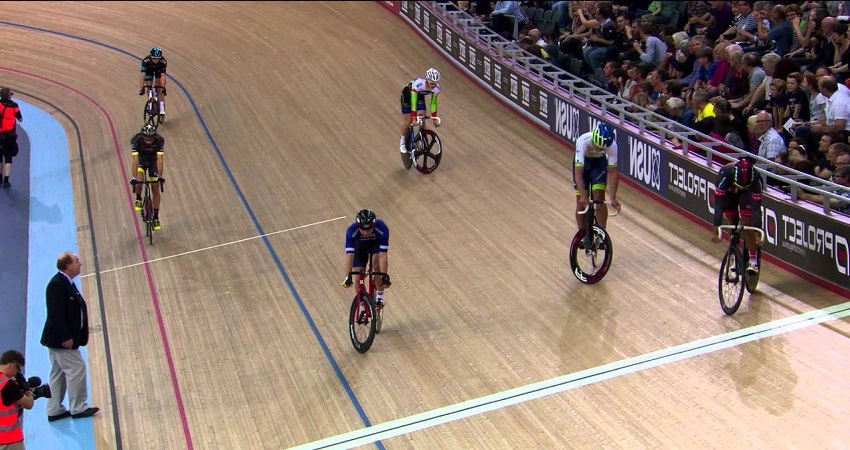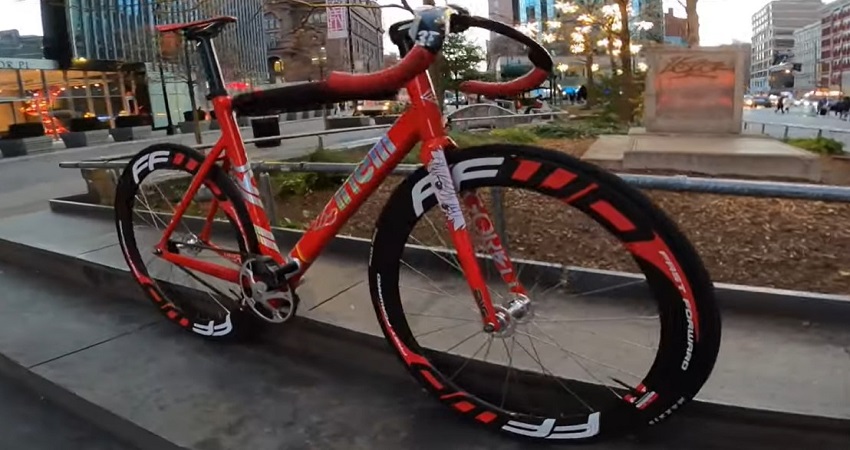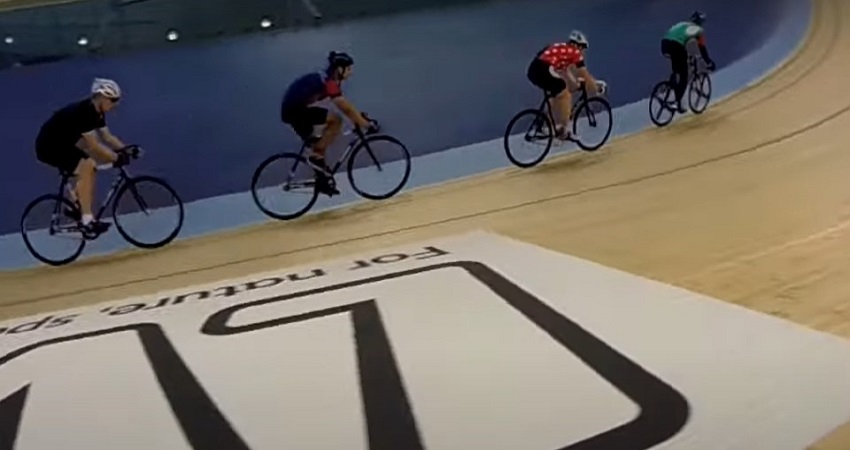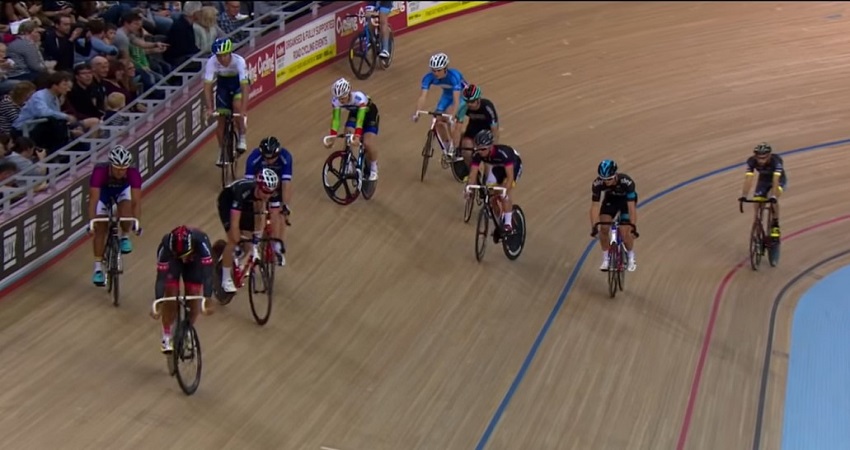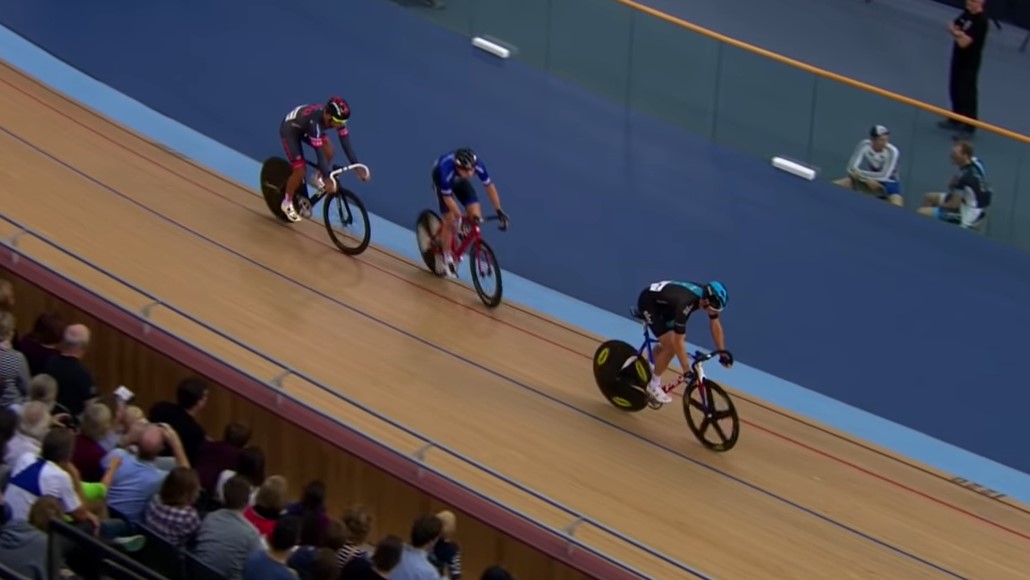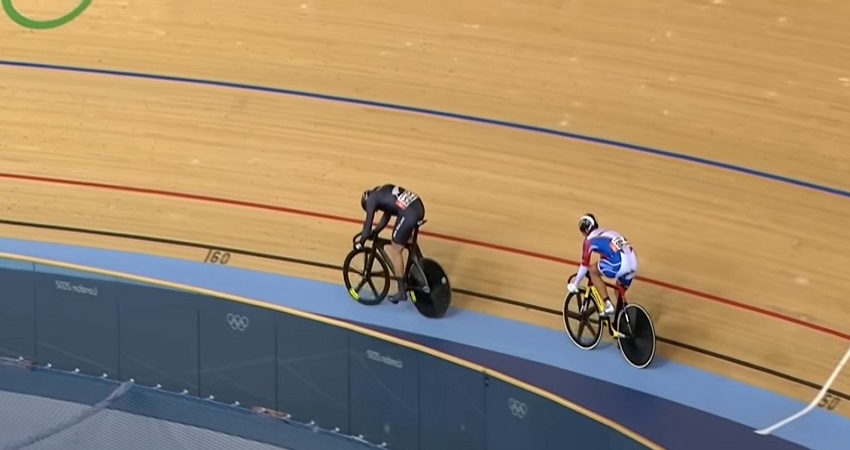
A Velodrome bike is specifically designed for track cycling and is not suitable for riding on the road. Velodrome bikes are built for track cycling and are not intended for road use.
These bikes have a fixed gear and lack brakes, making them unsafe and impractical for riding on regular roads. The design of a Velodrome bike focuses on speed and maneuverability around a track, with aerodynamic features such as lightweight frames and narrow tires.
Riding a Velodrome bike on the road can lead to accidents and is against traffic regulations in most areas. It is essential to use the appropriate type of bike for the specific environment to ensure safety and optimal performance.
The Difference Between A Velodrome Bike And A Road Bike
If you’re a cycling enthusiast, you’ve likely heard about velodrome bikes and road bikes. While both serve the purpose of cycling, they possess distinct features designed for different terrains and riding styles. Understanding the differences between these two types of bikes is crucial when deciding which one to ride. In this article, we will explore three key aspects that differentiate a velodrome bike from a road bike: frame geometry, gearing, and brakes.
Frame Geometry
The first notable difference between a velodrome bike and a road bike lies in their frame geometry. A velodrome bike typically has a steeper seat tube angle, shorter wheelbase, and higher bottom bracket. This unique design aims to optimize power transfer and agility on a velodrome track, where high-speed maneuvering and rapid accelerations are required.
In contrast, a road bike features a more relaxed seat tube angle, longer wheelbase, and lower bottom bracket. These elements offer stability, comfort, and endurance for long-distance rides on various road surfaces. The frame geometry of a road bike is crafted to enhance efficiency, aerodynamics, and overall handling, making it suitable for road racing or leisurely rides.
Gearing
Gearing is another aspect that sets velodrome bikes apart from road bikes. Velodrome bikes typically have a single fixed gear, keeping things simple and efficient. The absence of a freewheel mechanism means that the pedals are constantly in motion when the bike is in motion. This fixed gear setup allows for precise control and encourages the rider to maintain a consistent cadence, which is essential for track cycling.
On the other hand, road bikes usually have multiple gears, allowing riders to adapt to different terrains, inclines, and riding conditions. The gear ratios on a road bike enable riders to tackle steep climbs with ease or pick up speed on flat sections. The versatility of a road bike’s gearing system provides the necessary flexibility to tackle various road challenges.
Brakes
When it comes to brakes, velodrome bikes and road bikes differ significantly. Velodrome bikes typically have no brakes at all. This absence of brakes may seem peculiar, but it’s intentional. Since velodrome tracks have banked curves and a smooth, grippy surface, riders can control their speed and maneuver by leaning and using their body weight.
On the other hand, road bikes are equipped with dual-pivot caliper brakes or disc brakes, which offer reliable stopping power in various weather conditions. These braking systems provide the necessary control and safety required when riding on unpredictable road surfaces and during sudden stops or emergencies.
Challenges Of Riding A Velodrome Bike On The Road
Riding a velodrome bike on the road presents unique challenges due to its specialized design and purpose. These bikes are optimized for high-speed track racing, with fixed gears, no brakes, and a rigid frame. The lack of brakes and gears can make it difficult to navigate the varying terrain and traffic conditions on the road, making it unsafe and impractical for everyday use outside of the velodrome.
Handling And Stability
Riding a velodrome bike on the road poses several challenges, the first being the handling and stability of the bike itself. Velodrome bikes are specifically designed for racing on an indoor track with a smooth surface and tight turns. On the road, however, the conditions are quite different. The uneven road surfaces, potholes, and debris can make it difficult to maintain control of a velodrome bike.
Lack Of Brakes
One of the major challenges of riding a velodrome bike on the road is the lack of brakes. Velodrome bikes are designed with fixed gears, meaning that the pedals are directly connected to the rear wheel. This design allows for more control and efficiency on the track, but it can be incredibly dangerous on the road. Without brakes, riders have limited options for slowing down or stopping, making it essential to anticipate and plan maneuvers well in advance.
Gearing
Another challenge riders face when taking a velodrome bike on the road is the limited gearing options. Velodrome bikes typically have a single gear ratio that is optimized for speed on the track. This may not be suitable for navigating various terrains or tackling hills on the road. Riders may find themselves either pedaling furiously with little progress or struggling to maintain a comfortable cadence.
In conclusion, while it may be tempting to take a velodrome bike for a spin on the road, it is important to consider the challenges it presents. From handling and stability to the lack of brakes and limited gearing options, riding a velodrome bike on the road requires skill, caution, and adaptability. It is always recommended to use a bike specifically designed for road riding to ensure a safe and enjoyable experience.
Safety Considerations When Riding A Velodrome Bike On The Road
Riding a velodrome bike on the road is an exhilarating experience, but it’s important to consider the safety aspects before taking it out on the streets. In this section, we will discuss the key safety considerations to keep in mind when riding a velodrome bike on the road.
Visibility
Visibility plays a crucial role when riding a velodrome bike on the road. Since these bikes are designed for the track, they may not have the same visibility features as typical road bikes. It is essential to take extra measures to ensure that you are visible to other road users.
- Wear High-Visibility Clothing: Opt for brightly colored clothing or reflective gear that increases your visibility during day and night rides.
- Use Adequate Lighting: Install bright front and rear lights to enhance your visibility, especially when riding during low-light conditions.
- Signal Clearly: Use hand signals to indicate your intentions to turn or change lanes, making it easier for other road users to anticipate your moves.
Road Conditions
Riding a velodrome bike on the road demands extra attention to road conditions. Unlike the smooth surface of the track, roads can present various challenges that need to be addressed to ensure a safe and enjoyable ride.
- Potholes and Obstacles: Keep an eye out for potholes, debris, or any obstacles that could potentially harm both you and your bike. Avoid them by maneuvering carefully or choosing alternate routes.
- Uneven Surfaces: Road surfaces can be unpredictable, with uneven patches or rough areas. Take caution when encountering such surfaces, as they may affect your bike’s stability and control.
- Weather Conditions: Different weather conditions can significantly influence the road conditions. Be aware of wet or slippery surfaces, strong winds, or low visibility caused by rain, fog, or snow.
Rider Experience
Your experience as a rider plays a crucial role in ensuring your safety when riding a velodrome bike on the road. Before venturing out, consider the following factors:
- Familiarity with the Bike: Velodrome bikes have unique handling characteristics that may differ from traditional road bikes. Make sure you are accustomed to the bike and its specific features before taking it on the road.
- Rider Skills: Good bike handling skills are essential when riding on the road. Practice proper braking techniques, cornering, and maintaining balance to feel confident and in control.
- Obey Traffic Laws: Adhere to all traffic rules and regulations, including traffic signals and signs. Treat your velodrome bike as any other road vehicle and respect the rights of other road users.
By considering these safety factors such as visibility, road conditions, and rider experience, you can enjoy the thrill of riding a velodrome bike on the road while prioritizing your safety and the safety of others.
Tips For Riding A Velodrome Bike On The Road
Riding a velodrome bike on the road can be an exciting and challenging experience. While velodrome bikes are designed for smooth track surfaces, with a few adjustments and mindful riding, they can also be used on the road. In this article, we will provide you with some essential tips to help you ride a velodrome bike on the road with confidence and safety.
Start Slow And Gradually Build Confidence
If you’re new to riding a velodrome bike on the road, it’s crucial to start slow and gradually build your confidence. Velodrome bikes have high gears, which means they require more effort to pedal and may feel less stable at lower speeds. Begin by riding on quiet roads or in empty parking lots to get a feel for the bike’s handling and adjust to its unique characteristics.
Take your time to practice accelerating, braking, and turning, paying close attention to how the bike responds. Gradually increase your speed and distance as you become more comfortable with the bike’s different riding experience. This gradual approach will help you build the necessary skills and confidence to ride your velodrome bike on the road safely.
Choose Suitable Roads
When riding a velodrome bike on the road, it’s important to select suitable roads that will enhance your experience and ensure your safety. Look for roads with smooth, well-paved surfaces, as the skinny tires of a velodrome bike are more sensitive to bumps and potholes than those of a regular road bike.
Avoid busy streets or roads with heavy traffic, especially when you’re still getting accustomed to handling a velodrome bike on the road. Opt for quieter residential areas or bike paths where you can ride comfortably, without feeling pressured by surrounding vehicles.
Additionally, consider the road gradient when choosing your route. Velodrome bikes feature a fixed gear, which can make climbing hills challenging. Look for flatter routes that allow you to maintain a steady cadence and avoid steep inclines that can put unnecessary strain on your legs.
Ensure Proper Bike Maintenance
Maintaining your velodrome bike regularly is crucial for both performance and safety. Check the tire pressure before every ride, as the higher tire pressure used on velodrome bikes might need adjustment for road use. Make sure the brakes are working properly and the brake pads are in good condition.
Inspect the chain, gears, and pedals for any signs of wear or damage. Keep them clean and well-lubricated to ensure smooth and efficient pedaling. Regularly tighten loose bolts and ensure all components are securely fastened.
Consider getting your bike serviced by a professional bike mechanic at least once a year. They can thoroughly inspect your velodrome bike, identify any potential issues, and make the necessary adjustments or repairs to keep your bike in optimal condition.
By following these tips, you can safely and confidently enjoy riding a velodrome bike on the road. Remember to start slow and gradually build your skills and confidence, choose suitable roads that are bike-friendly, and ensure proper bike maintenance to keep your velodrome bike in top shape. Happy riding!
Alternatives: Road Bikes Designed For Track Cycling
Discover the possibilities of riding track bikes on the road with these alternatives. Designed for track cycling, these road bikes offer a unique experience for enthusiasts seeking a thrilling ride. Experience the speed and agility of a velodrome bike on the open road.
If you’re passionate about cycling and want to experience the thrill of track cycling on the road, there are alternatives to velodrome bikes that allow you to do just that. Road bikes designed specifically for track cycling offer a great solution, ensuring you can enjoy the sport wherever you ride. Here, we explore two types of road bikes that are perfect for those who want to take their track cycling skills to the streets: track-specific road bikes and convertible track/road bikes.
Track-specific Road Bikes
Track-specific road bikes are built with one main focus in mind – track cycling. These bikes are designed to optimize performance and maneuverability on the velodrome, offering a lightweight frame and aerodynamic components. With a track-specific road bike, you can expect features such as a stiffer frame to enhance power transfer, aerodynamic handlebars for decreased wind resistance, and high-profile carbon wheels for increased speed. These bikes are engineered to excel in a controlled environment like the velodrome, making them less suitable for everyday road cycling due to their specialized design and limited versatility.
Convertible Track/road Bikes
For those who want the flexibility to ride both on the track and the road, convertible track/road bikes are the ideal choice. These bikes are designed to be versatile, allowing you to easily transition between the velodrome and regular road cycling. Convertible track/road bikes usually feature adjustable components like dropouts, seat tube angles, and handlebars, enabling you to switch from a more aggressive track position to a relaxed road position.
The frame geometry and construction strike a balance between speed and comfort, making them well-suited for both track and road cycling. With the right adjustments, these bikes provide a seamless transition, allowing you to enjoy the best of both worlds.
In conclusion, while riding a velodrome bike on the road may not be ideal or safe, there are suitable alternatives available. Track-specific road bikes cater to the needs of dedicated track cyclists, while convertible track/road bikes offer versatility for those who desire a combination of track and road riding experiences. Whether you choose a specialized track bike or a convertible model, these road bikes designed for track cycling will undoubtedly deliver an exhilarating ride both on the velodrome and wherever your road takes you.
Frequently Asked Questions Of Can You Ride A Velodrome Bike On Road?
Can You Ride A Velodrome Bike On Road?
No, velodrome bikes are specifically designed for racing on indoor tracks. They have fixed gears, no brakes, and are not suitable for riding on the road. If you’re looking for a bike for road cycling, it’s best to choose a road bike that is designed for that purpose.
Conclusion
While velodrome bikes are specifically designed for indoor track racing, it is not recommended to ride them on the road. These bikes are built with lightweight frames, fixed gears, and smooth tires, making them less suitable for road conditions. Opting for a road bike would provide a safer and more efficient experience for riding on the streets.
Nonetheless, it’s important to always follow local traffic laws and regulations regardless of the type of bike you choose.
